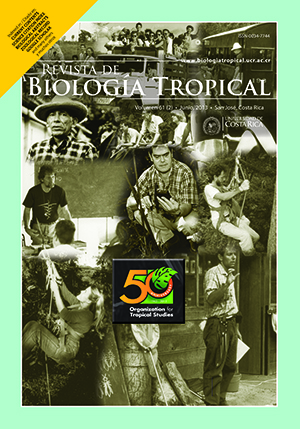Abstract
Composition and structure of the macrofauna associated with beds of two bivalve species in Cubagua Island, Venezuela. Bivalve aggregations constitute a microhabitat for a wide variety of organisms in intertidal, subtidal and deep-water marine benthic habitats. Increase in density of bivalve beds could offer more crevices and substratum for the associated fauna, affecting community composition. Beds of the Atlantic Pearl Oyster (Pinctada imbricata) and the Turkey Wing (Arca zebra) of contrasting population densities were evaluated to determine the composition and structure of the associated macrofauna of three taxa (Crustacea Decapoda, Mollusca and Echinodermata). We evaluated plots of three levels of bed density in both species, the associated fauna were identified and counted. Other species were collected by qualitative samples. Univariate and multivariate descriptors were tested comparing the associated fauna between the beds of two species at three levels of density. In these beds a total of 104 species belonging to 58 families were recorded. Mithraculus forceps (Majidae), Crucibulum auricula (Calyptraeidae) and Ophiotrix angulata (Ophiothrichidae) were the most common species found in these assemblages. The medium and high-density bivalve beds exhibited greater species number, abundance, Shannon diversity, evenness, taxonomic diversity, and taxonomic distinctness of associated fauna, than low-density bivalve beds. Moreover, multivariate analysis detected different assemblages of associated fauna between beds with different densities. Additionally, similarities were found in the communities of macrofauna in both beds of P. imbricata and Arca zebra. Our results suggest that bivalve aggregations at Cubagua Island provide additional habitat for macrofauna living in other shallow habitats such as Thalassia beds, corals and rocky environments. Bed density, associated with topographic complexity, represents an important factor for the composition and complexity of the associated fauna.##plugins.facebook.comentarios##
Downloads
Download data is not yet available.






